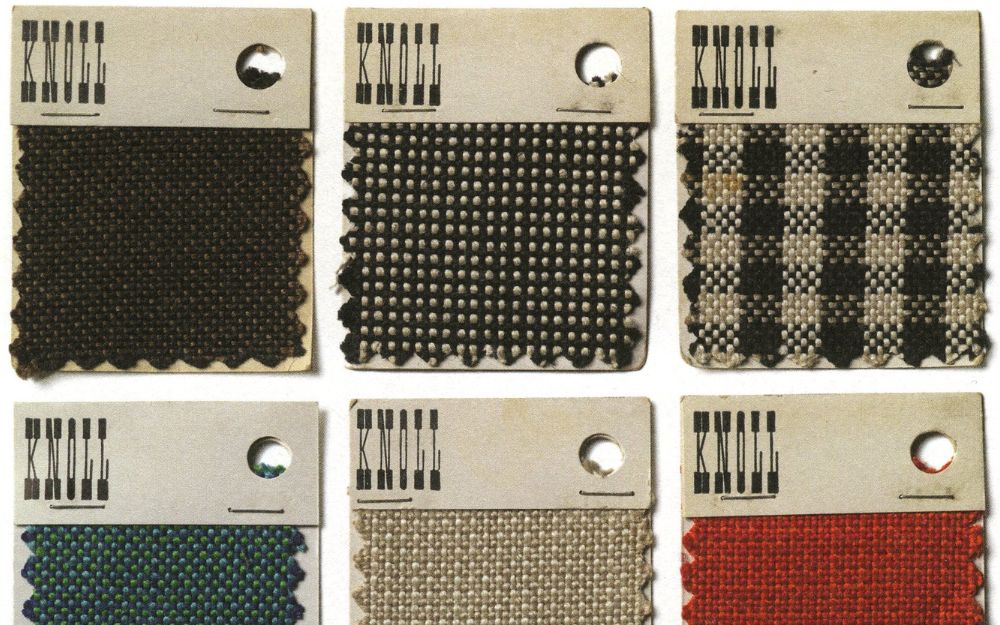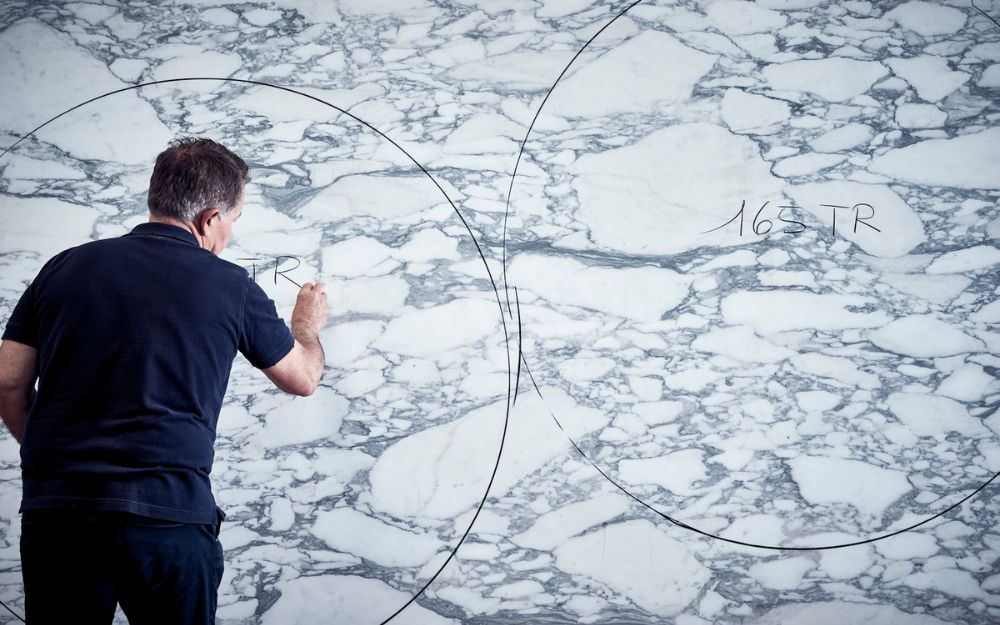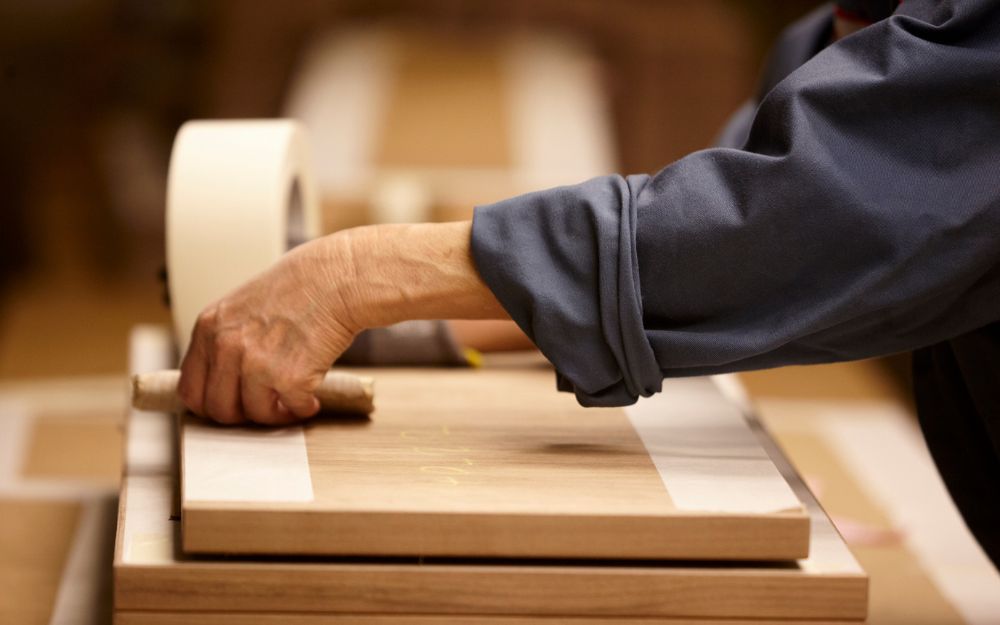Features
How Knoll brings design intelligence to material and craft
Coco Chanel famously said, “dress shabbily and they remember the dress; dress impeccably and they remember the woman.” The same idea applies to the spaces we inhabit. When the highest quality materials are masterfully applied, the result is unforgettable. Knoll furniture serves as the crown jewel in any office, lobby, or home. Founded in 1938, the company is celebrated worldwide for its innovative collections produced with an unwavering commitment to material excellence and expert craft.
Swatch of excellence
The company’s pioneering approach to materiality begins with one of the most ubiquitous symbols of interior design: the fabric swatch. Florence Knoll invented it. Other companies offered swatches, but Florence—who was trained as an architect— had hands-on experience in the importance of understanding materials. Thus, Knoll became the first company to mount squares of fabric to identification cards packed with information interior designers need while working on projects. The company’s evolutionary and revolutionary use of materials goes beyond textiles. Knoll is recognized worldwide for its innovative use of wood, marble, and metal.

Mastery of marble
Like a couture dress made of the most luxurious fabric, when Knoll uses marble, the cut is always precise, and the application one-of-a-kind.
Grasshopper Tables by Piero Lissoni, as well as collections by Florence Knoll, Eero Saarinen and other designers are offered in an array of gorgeous stones sustainably sourced from quarries in Italy and Slovenia. A commitment to quality guides everything Knoll does, which is why the company uses only the highest quality marbles, chosen for their favorable working qualities and containing few geological flaws or voids. Finding quality marbles isn’t easy, and fewer than 10% meet the Knoll standard.

“Each material has specific characteristics, which we must understand if we want to use it.”
Ludwig Mies van der Rohe
Determining where to cut marble to optimize the highest quality and most beautiful portions of the slab requires the expertise of highly qualified stone masters, who analyze the veining and patterns to determine the final cut. Skilled artisans then hand-finish the edges before applying the company’s signature maintenance-free finish to create a durable, nonporous surface that prevents stains. Since 1958, Knoll has adhered to the strictest standards and time-honored techniques for working with natural stone.
Proficiency with metal
Florence and Hans Knoll gave designers free rein to experiment with the mediums of their choice. This approach led to the design of many notable products, including the wire chair collection by Harry Bertoia, who spent nearly two years experimenting with and perfecting his technical proficiency in metal before showing Florence and Hans his chair. “When it came to rod or wire, whether bent or straight, I seemed to find myself at home,” said Bertoia.
Not only was Bertoia’s design innovative, but because there was nothing else like it, he also had to find a way to make it. Working with Richard Schultz and Don Petitt, Bertoia invented a production process—handbending the rods, hand-weaving them into a frame, and individually welding each one in place—which is still how the Bertoia collection is made today.
Ludwig Mies van der Rohe also excelled in the innovative use of metal. When Florence and Hans partnered with him to produce his designs, they suggested a few changes based on their materials expertise. For the Brno Chair, which Mies originally made with a tubular steel frame, Florence suggested they also make a version with rolled metal to give it a more refined look, like the Barcelona Chair. Decades later, Knoll continues to make both versions of the Brno Chair.

Florence and Hans Knoll knew they weren’t just making furniture, they were creating works of art. From Bertoia and Mies to works by Marcel Breuer to Warren Platner, Knoll is the leader in innovative metal works.
Wire forms have a great range of expressions. Their constructions pertain to space rather than ground, and their configurations can be light, airy, almost floating.”
Harry Bertoia
A sustainable and celebratory approach to wood
From the beginning, wood has been a crucial part of the Knoll DNA. From its first collections by Danish designer Jens Risom—known for his mastery of craft and Scandinavian approach to materials—to its introduction of the industry’s first all-wood office system in 1973, Knoll knows how to combine the natural warmth and durability of wood with clean, modern design.
Wood invites the outside in, bringing a sense of well-being to interiors in ways unlike any other material. Research has shown that wood is one of the most beneficial materials for interiors in how it influences the psychological and physiological response to space. Given all the benefits of this material it’s even more crucial to protect it from overuse. This is why Knoll has been a leader in environmental action since 1978, when it began implementing the clean technology initiatives that have earned recognition from industry and regulatory agencies, including the EPA. All Knoll manufacturing facilities worldwide are ISO 14001 certified, and the Forest Stewardship Council® (FSC® C028824) ensures that Knoll products bearing the FSC mark are manufactured with wood from forests that protect environmental, social, and economic values.
